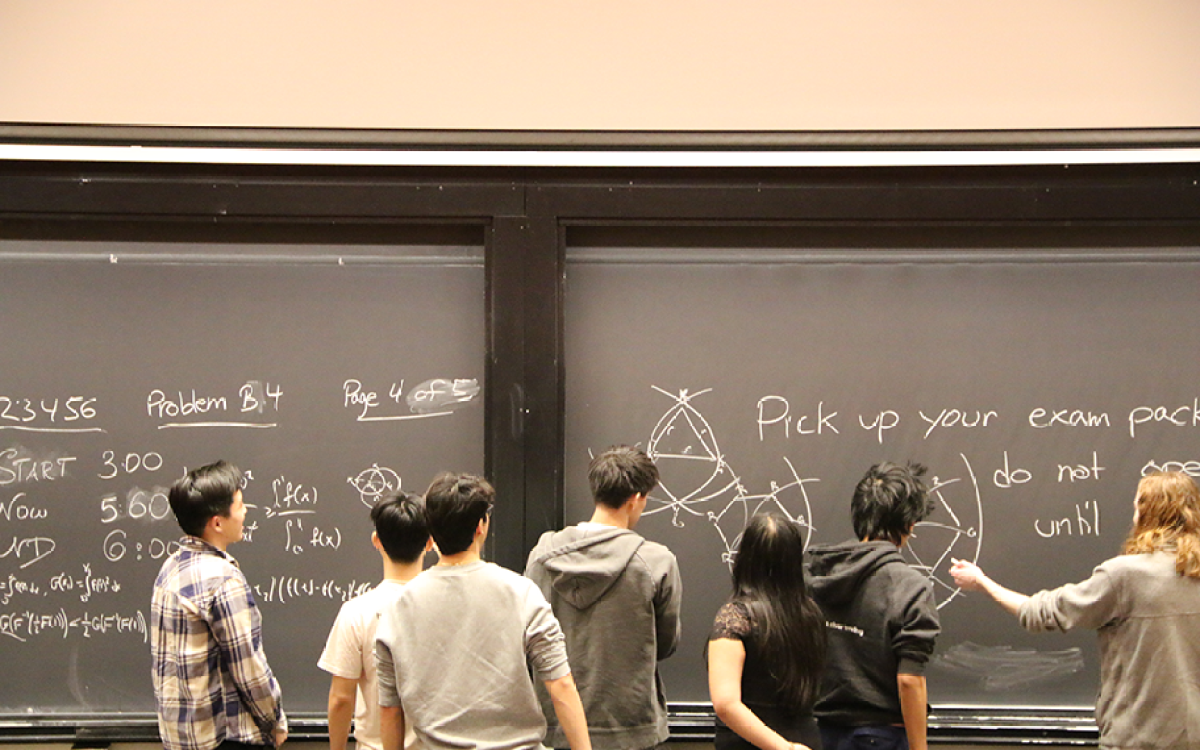Tag: Astronomy
-
Science & Tech
Growing supermassive black holes from seeds
Astronomers announced Jan. 12, 2006 that they have found the first sample of intermediate-mass black holes in active galaxies – a discovery that will help in understanding the early universe.…
-
Science & Tech
Astronomers spot the Great Orion Nebula’s successor
Astronomers announced Jan. 11, 2006, that they have found the next Orion Nebula. Known as W3, this glowing gas cloud in the constellation Cassiopeia has just begun to shine with…
-
Science & Tech
See-through galaxy
To peer into the galactic center of our own Milky Way galaxy, astronomers Silas Laycock and Josh Grindlay used the unique capabilities of the 6.5-meter-diameter Magellan Telescope in Chile. By…
-
Science & Tech
Going beyond Einstein
Observations by two astronomers confirm one important theory about how a black hole’s extreme gravity can stretch light. The data also paint an intriguing image of how a spinning black…
-
Science & Tech
Scientists find black hole’s ‘point of no return’
By a score of 135 to zero, scientists using NASA’s Rossi X-ray Timing Explorer have compared suspected neutron stars and black holes and found that the black holes behaved as…
-
Science & Tech
Spitzer puts a new spin on the Helix Nebula
Helix Nebula (NGC 7293) is a challenging stargazing target for amateur astronomers. It is one of the closest planetary nebulas – a type of nebula formed from gas ejected by…
-
Science & Tech
Alien treasures in our backyard
Astronomers have gained an important clue to guide their hunt for extrasolar worlds. And that clue points to the unlikeliest of places — our own backyard. “It’s possible that some…
-
Science & Tech
Frequent starbursts sterilize center of Milky Way
A scenario in which exploding stars kill all life within the center of our galaxy is detailed by stronomer Antony Stark (Harvard-Smithsonian Center for Astrophysics) and colleagues in the October…
-
Science & Tech
Galactic collision reveals fate of Milky Way galaxy
Sixty-eight million light-years away, the Antennae galaxies are locked in a dance of death, with stars being ripped from their orbits and spiral arms being shredded into streamers that dangle…
-
Science & Tech
Some globular clusters may be leftovers from snacking galaxies
According to the hierarchical theory of galaxy formation, galaxies have grown larger over time by consuming smaller dwarf galaxies and star clusters. And sometimes, it seems that the unfortunate prey…
-
Science & Tech
Lifeless suns dominated early universe
The very first generation of stars were not at all like our Sun. They were white-hot, massive stars that were very short-lived. Burning for only a few million years, they…
-
Science & Tech
Raging storms of hot and cold gas
New observations with the Space Telescope Imaging Spectrograph (STIS), Hubble’s high-precision and ultra-sensitive spectrometer, show that the warm chromosphere of Betelgeuse extends out to more than 50 times its radius…
-
Science & Tech
Young star caught speeding
Findings linking a speeding star to its birthplace provide direct observational support of theoretical simulations predicting that protostars can be tossed out of a young cluster. This is the first…
-
Science & Tech
Suns of all ages possess comets, maybe planets
Astronomers observed a comet puffing out huge amounts of carbon, one of the key elements for life. The comet also emitted large amounts of water vapor as the Sun’s heat…
-
Science & Tech
Planetary survivor strategy: Outeat, outweigh, outlast!
Astronomers Myron Lecar and Dimitar Sasselov have found that planet formation is a contest, where a growing planet must fight for survival lest it be swallowed by the star that…
-
Campus & Community
Speedy solar storm reaches Earth
An Oct. 28, 2003 eruption created a monstrous solar flare – the third largest recorded since 1976 – and an associated coronal mass ejection, in which superheated gas, called plasma,…
-
Science & Tech
First supernovae quickly seeded universe with stuff of life
The early universe was a barren wasteland of hydrogen, helium, and a touch of lithium, containing none of the elements necessary for life as we know it. From those primordial…
-
Science & Tech
“Winking star” started winking only recently
In 2002, astronomers at Wesleyan University announced that they had discovered a “winking” star that undergoes a regular, long-lasting (approximately 20 day) eclipse every 48 days. They theorized that those…
-
Science & Tech
Asteroid Juno has a bite out of it
Juno, the third asteroid ever discovered, was first spotted by astronomers early in the 19th century. It orbits the Sun with thousands of other bits of space rock in the…
-
Science & Tech
A pancake, not a doughnut, shapes distant galactic center
Astronomer Lincoln Greenhill (Harvard-Smithsonian Center for Astrophysics) and colleagues have found direct evidence for a “pancake” of gas and dust at the center of Circinus — a thin, warped disk…
-
Science & Tech
State-of-the-art solar model tracks eruption
The Sun may appear to be a bright, steadily shining orb, but it is actually a seething cauldron of hot gases prone to violent eruptions. The most dramatic eruptions are…
-
Science & Tech
Harvard continues legacy of Cepheid discoveries
Cepheids are important to astronomers for their key role as extragalactic distance indicators. Cepheids are variable stars that regularly brighten and dim as they pulsate rhythmically. Their pulsation period is…
-
Science & Tech
Do we live in a “stop and go” universe?
At the 202nd meeting of the American Astronomical Society, Robert Kirshner (Harvard-Smithsonian Center for Astrophysics), on behalf of the international High-z Supernova Search Team led by Brian Schmidt (Mount Stromlo…
-
Science & Tech
Astronomers link gamma-ray bursts, supernovae
Gamma-ray bursts are incredibly bright flashes of high-energy radiation that likely signal the birth of black holes. Bursts occur at random locations scattered across the sky, and few last more…
-
Science & Tech
Cool X-ray disk points to new type of black hole
Black holes are objects so dense and with a gravitational potential so strong that nothing, not even light, can escape the pull if it ventures too close. Black holes are…
-
Science & Tech
Molecular cloud has a heartbeat
Barnard 68, located 300 light-years away in the constellation Ophiuchus, is a typical example of small, dark molecular clouds known as Bok Globules. Such dense, cold clouds of dust and…
-
Science & Tech
First Milky Ways found at edge of universe
One key question that has puzzled astronomers for decades is: When did the first stars and galaxies form after the Big Bang occurred? The answer — very quickly! Astronomers Rennan…
-
Science & Tech
Hypergiant star erupts
In the year 2000, the star Rho Cassiopeiae, n the constellation of Cassiopeia, lost more mass than in any other stellar eruption observed by astronomers. An international team of astronomers,…
-
Science & Tech
Young star cluster found aglow with mysterious X-ray cloud
Known as RCW 38, a star cluster covers a region about 5 light years across. It contains thousands of stars formed less than a million years ago and appears to…
-
Science & Tech
Harvard science historian publishes results of unprecedented 30-year census of Copernican masterpiece
First published in 1543, Nicholas Copernicus’ De revolutionibus orbium coelestium introduced the world to the concept of a sun-centered universe. In it, Copernicus detailed how the motions of the sun,…


